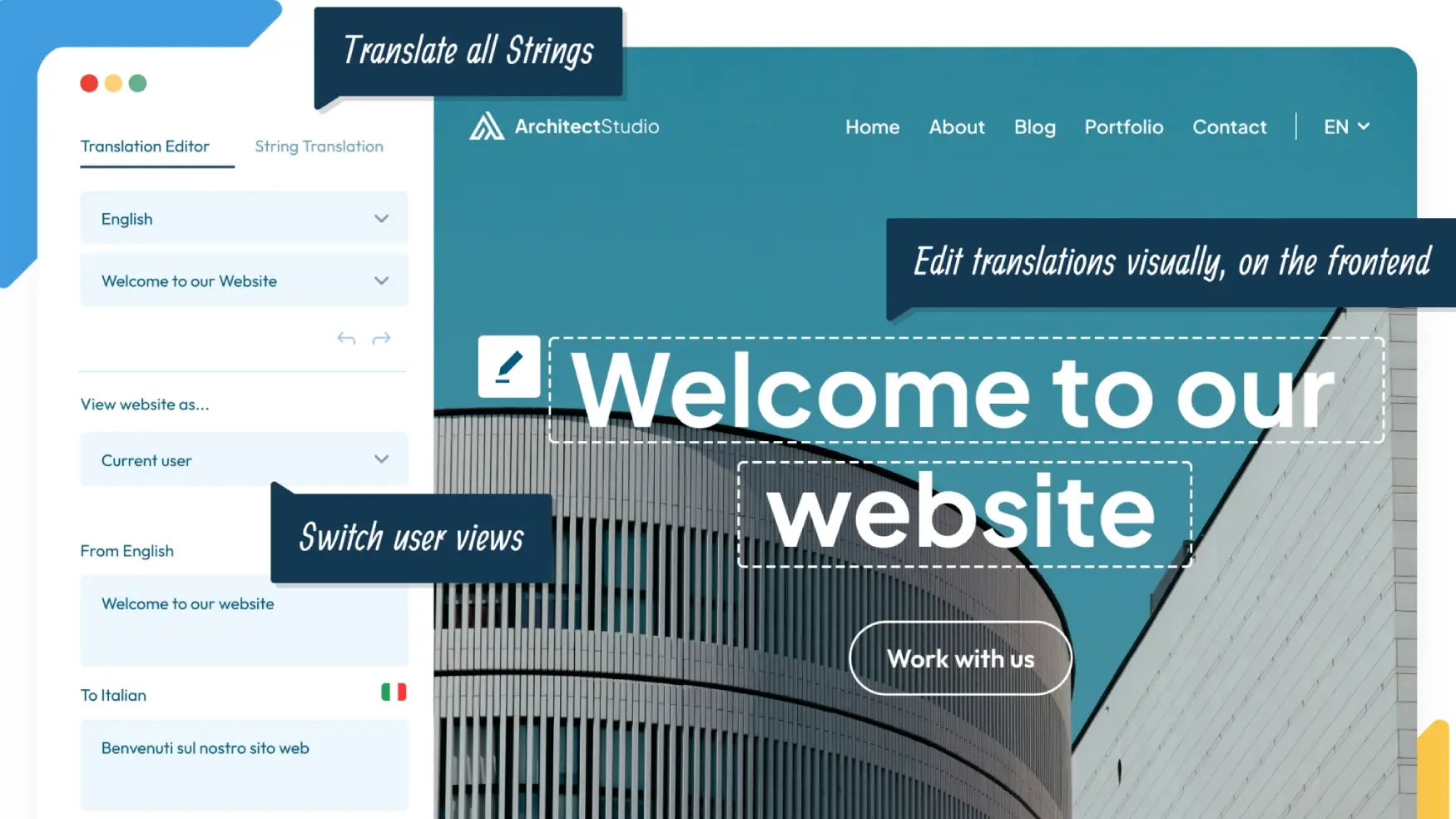If you want to reach a global audience with your WordPress website, translation is no longer optional; in fact, it’s essential. A multilingual website not only improves user experience but also boosts your SEO rankings in different countries. That’s where the TranslatePress WordPress plugin truly shines.
What Is TranslatePress?
TranslatePress is a powerful WordPress translation plugin that allows you to translate your entire website directly from the front-end. Unlike other tools, it offers a visual translation editor, meaning you can translate text, images, menus, and even WooCommerce products with a live preview.
- Translate directly from the front-end of your site
- Supports both manual and automatic translation (Google Translate, DeepL)
- SEO-friendly with the SEO Pack Add-On
- Works seamlessly with WooCommerce, page builders, and themes
- Supports unlimited languages (premium feature)
Why Choose TranslatePress Over Other Translation Plugins?
There are many options, such as WPML or Polylang; however, TranslatePress has unique advantages:
- Ease of Use: Simple front-end editor for all users
- SEO Benefits: Translate URL slugs, meta titles, descriptions, and image ALT tags
- Performance Friendly: Lightweight and fast
- Compatibility: Works with Elementor, Divi, Gutenberg, WooCommerce, and more
Step 1: Install and Set Up TranslatePress
- Go to Plugins → Add New in your WordPress dashboard
- Search for TranslatePress
- Could you install and activate it?
- Go to Settings → TranslatePress
- Choose your default language and add new languages
✅ That’s it, you’re ready to start translating!
Step 2: Translating Content with the Front-End Editor
With TranslatePress, you can translate everything directly from your website’s front-end:
- Hover over the text you want to translate
- Enter your translation in the sidebar
- Save changes and preview instantly
This works for pages, posts, menus, widgets, WooCommerce products, and custom post types.
Step 3: SEO Optimization with TranslatePress
The SEO Pack Add-on unlocks powerful features to make your site multilingual and SEO-friendly:
- Meta Titles & Descriptions – rank in multiple languages
- URL Slugs – localize slugs for better rankings
- Image ALT Tags – optimize images for multilingual SEO
- Multilingual Sitemaps – integrates with Yoast SEO, Rank Math, and SEOPress
- Hreflang Tags – help Google understand your site’s language versions
Step 4: Translate WooCommerce with TranslatePress
TranslatePress makes it easy to localize your WooCommerce store, including:
- Product titles & descriptions
- Categories & attributes
- Checkout pages
- Customer emails
Therefore, it ensures a seamless shopping experience for international customers.
TranslatePress vs WPML: Which Should You Choose?
| Feature | TranslatePress | WPML |
|---|---|---|
| Ease of Use | ✅ Simple front-end editor | ❌ Complex backend system |
| SEO Support | ✅ SEO Pack add-on | ✅ Strong SEO features |
| Performance | ✅ Lightweight | ❌ Can slow down the site |
| Price | Affordable & flexible | Higher cost & learning curve |
Best Practices for Using TranslatePress in 2025
- Start with automatic translation and refine manually
- Translate slugs and metadata for better SEO
- Enable hreflang tags to avoid duplicate content penalties
- Check site speed after enabling translations
- Use cultural keywords that locals actually search for
Final Thoughts
If you want to grow your website internationally and improve multilingual SEO, TranslatePress is one of the best WordPress translation plugins in 2025.
It’s user-friendly, SEO-ready, and works with any theme or plugin. Whether you’re running a blog, business site, or WooCommerce store, TranslatePress will help you reach new markets and rank higher in multiple languages.
Pro Tip: Pair TranslatePress with an SEO plugin like Rank Math for the best results.
Frequently Asked Questions About TranslatePress
1. What is the TranslatePress WordPress plugin?
TranslatePress is a popular WordPress translation plugin that lets you translate your website directly from the front-end. It supports both manual and automatic translations, making it one of the best multilingual plugins for WordPress.
2. Is TranslatePress SEO-friendly?
Yes, TranslatePress is SEO-friendly. With the SEO Pack Add-on, you can translate meta titles, descriptions, URL slugs, and image ALT tags. It also supports hreflang tags and integrates with SEO plugins like Yoast SEO, Rank Math, and SEOPress.
3. Can I use TranslatePress with WooCommerce?
Absolutely! TranslatePress works perfectly with WooCommerce. You can translate product titles, descriptions, categories, checkout pages, and even customer emails, ensuring a complete multilingual shopping experience.
4. How do I translate a WordPress website with TranslatePress?
To translate your WordPress site, install TranslatePress, choose your default and additional languages, and use the front-end visual translation editor to edit content directly on your site. You can also enable automatic translations via Google Translate or DeepL.
5. TranslatePress vs WPML – which is better?
Both are strong plugins, but TranslatePressis easier to use thanks to its visual front-end editor and lightweight design. WPML offers more advanced customization but has a steeper learning curve. If you want a balance of ease and SEO benefits, TranslatePress is a better choice.
6. Does TranslatePress support automatic translation?
Yes, TranslatePress integrates with Google Translate and DeepL to provide automatic translations. You can start with machine translation and then manually refine content to improve accuracy and SEO.
7. Is TranslatePress free or paid?
TranslatePress offers both a free version and premium plans. The free version is great for basic translations, while the premium version unlocks advanced features like SEO Pack, unlimited languages, DeepL integration, and WooCommerce support.
Get Started
Ready to make your WordPress site multilingual? Download TranslatePress today and start reaching global audiences with ease!
Get TranslatePress Now
You May Like it
Discover more from Wordpress Tutorial for Beginner's
Subscribe to get the latest posts sent to your email.




